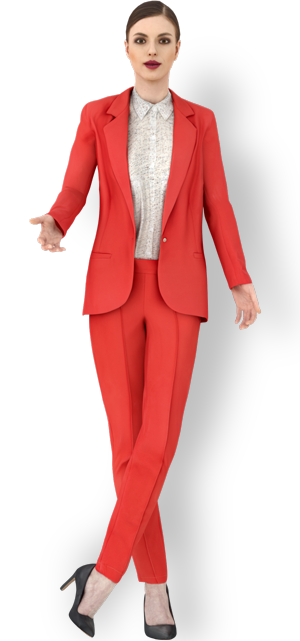DESIGN AND ARTS HISTORY - GENERAL OUTLINES AND SKILLS
Over the course of the five-year period, the high school student acquires the mastery of "graphic/geometric" drawing as a language and tool of knowledge that develops through the ability to see in space, make comparisons, hypothesize relationships, and ask questions about the nature of natural and artificial forms. The graphic/geometric language is used by the student to learn to understand, systematically and historically, the physical environment in which he lives. The mastery of the main methods of representation of descriptive geometry and the use of the tools of drawing are also aimed at studying and understanding the fundamental texts of the history of art and architecture.
The main skills acquired by the student at the end of the high school course are: to be able to read architectural and artistic works in order to be able to critically appreciate them and be able to distinguish the compositional elements, having made their own an appropriate terminology and descriptive syntax; become familiar with specific expressive languages and be able to recognize formal values that are not disconnected from intentions and meanings, having formal and iconographic reading as tools of investigation and analysis; be able both to place a work of art in the historical-cultural context, and to recognize its materials and techniques, stylistic characteristics, meanings and symbolic values, use value and functions, client and destination. Through the study of the authors and fundamental works, the student develops a clear awareness of the great value of the artistic tradition that precedes it, grasping the meaning and value of the architectural and cultural heritage, not only Italian, and becoming aware of the role that this heritage has had in the development of the history of culture as a testimony of civilization in which to find one's own and others' identity. The study of artistic phenomena will have the history of architecture as its backbone. The figurative arts will be considered primarily, though not exclusively, in relation to it. Teachers will also be able to include elements of the city's history in their programming, in order to present individual architectures as an integral part of a given urban context.
SPECIFIC LEARNING OBJECTIVES
FIRST TWO-YEARS PERIOD
During the first two years, the study of architectural and artistic production from its origins to the end of the fourteenth century will be addressed. The student will be introduced to the reading of the work of art and the architectural space, identifying the definitions and classifications of the arts and the formal categories of the artistic and architectural fact. Of the prehistoric art, the megalithic architecture and the trilithic construction system will be analyzed; in Greek art, in particular that referred to the classical period, the study of the temple, the architectural orders, the sculptural decoration, with particular reference to that of the Parthenon, and the theater will be essential. From Roman art, the engineering works (roads, bridges, aqueducts), the construction techniques, the main architectural typologies (baths, amphitheaters, forums) and the main celebratory monuments will be studied. In the treatment of Romanesque and Gothic architecture, particular attention must be paid to the analysis of the techniques and construction methods, materials and styles used to build churches and cathedrals. The discussion of some significant examples of pictorial and sculptural decoration will be an opportunity to get to know some of the most important artistic personalities of this period, from Wiligelmo to Giotto and the other great masters active between the thirteenth and fourteenth centuries. The use of tools for technical drawing will be introduced, starting with the construction of flat geometric figures and continuing with Orthogonal Projections: projection of points, segments, plane figures, geometric solids, in positions different from the three planes, overturns, sections. It will be possible to start from the representation of simple geometric figures and objects, freehand and then with tools (ruler, square and compass) to then move on to the axonometric representation of simple geometric solids and architectural volumes, as well as ancient buildings studied in the field of art history.
It will then be possible to present to students the fundamentals of the study of shadows (the proper and improper light source, the shadow carried, the chiaroscuro), but postponing to the second two years the in-depth and systematic study of the actual "theory of shadows". Particular attention will be paid to dealing with drawing as a tool for the rigorous and exact representation of geometric figures and solids, in order to make more easily understandable what will be done in geometry in the mathematics program.
SECOND TWO YEARS - PERIOD
Acknowledging the teacher's freedom to organize his or her own plan and to decline it according to the most appropriate teaching for the learning context of the class and the number of hours available, it is essential that the most significant artists, works and movements of each period are identified, favoring as much as possible the direct approach to the work of art. The program will analyze artistic and architectural expressions from the early 1400s to Impressionism. Among the fundamental contents for the 1400s and 1500s: the early Renaissance in Florence and the work of Brunelleschi, Donatello, Masaccio; the invention of perspective and its consequences for architecture and the figurative arts; the works and theoretical reflection of Leon Battista Alberti; the Italian artistic centers and the main protagonists: Piero della Francesca, Mantegna, Antonello, Bellini; the ideal city, the palace, the villa; the initiators of the "third way": Bramante, Leonardo, Michelangelo, Raphael; Mannerism in architecture and the figurative arts; the great season of Venetian art; Palladio's architecture. For the 1600s and 1700s: the novelties proposed by Caravaggio; the exemplary works of the Roman Baroque (Bernini, Borromini, Pietro da Cortona); the typology of the palace, from the great complex of Versailles to the works of Juvara (Stupinigi) and Vanvitelli (Caserta). For the art of the second half of the 1700s and 1800s: the architecture of Neoclassicism; the landscape in the Romantic age: "picturesque" and "sublime"; the "Gothic revival"; the consequences of the Industrial Revolution: new materials and construction techniques, the bourgeois city and the great urban renovations; the painting of Realism and Impressionism. In the second two years, the value of the constructive and practical component of drawing will enrich the course: in addition to the systematic study of the Theory of shadows (plane figures, geometric solids and architectural volumes), the technique of the representation of space will be addressed through the study of the central and accidental perspective of plane figures, geometric solids and architectural volumes also in relation to works of art; The fundamentals for the typological, structural, functional and distributive analysis of architecture will be analyzed, and the study of the composition of facades and their material design, with shadows. Finally, in the second two years it is necessary for students to be introduced to the knowledge and use of computer tools for graphic representation and design, in particular CAD programs.
FIFTH YEAR
In the fifth year, the history of art will start from post-impressionist research, intended as a premise for the development of the avant-garde movements of the twentieth century, to come to consider the main lines of development of contemporary art and architecture, both in Italy and in other countries. Particular attention will be given to: new materials (iron and glass) and new types of construction in architecture, from Universal Exhibitions to Art Nouveau achievements; the development of industrial design, from William Morris to the Bauhaus experience; to the main artistic avant-gardes of the twentieth century; the Modern Movement in Architecture, with its main protagonists, and its developments in contemporary architectural and urban culture; the crisis of functionalism and post-war urbanization; and finally, to the current new construction systems based on the use of technologies and materials aimed at an eco-sustainable use. In the last year of the course, the design will be aimed both at the analysis and knowledge of the built environment (of an urban space, a building, a monument), through the graphic-photographic survey and sketches from life, and at the elaboration of simple design proposals for the modification of the existing or to be built from scratch. The balance between the use of drawing as a function of analysis and as a tool for design research is entrusted to the experience and didactic choices of each teacher.
TALK WITH US

